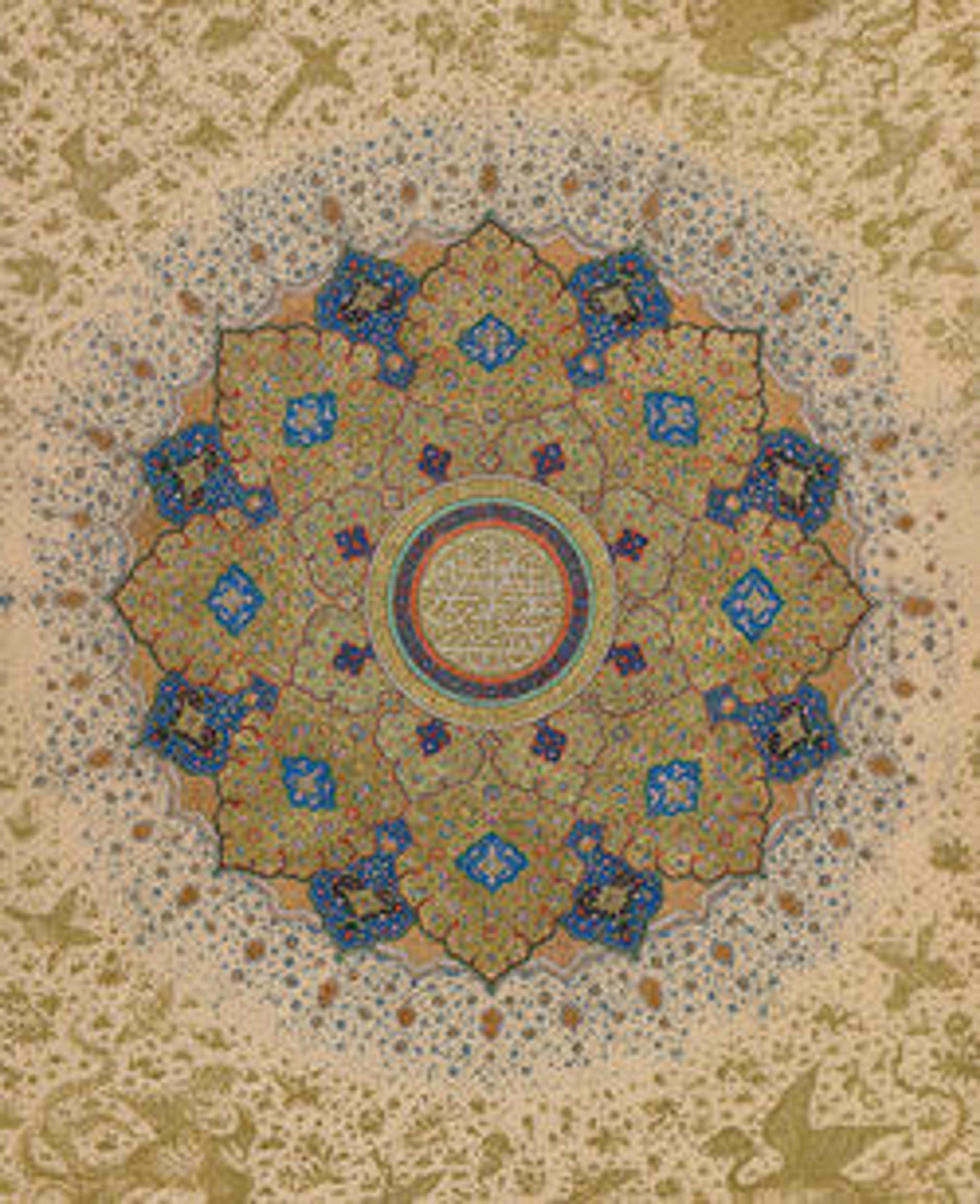"Three Men Before a Castle", Folio from a Khavarannama (The Book of the East) of ibn Husam al-Din
The fifteenth‑century author Maulana Muhammad ibn Husam al‑Din, known as Ibn Husam, wrote the Khavarannama in emulation of the great poet Firdausi’s national Persian epic, the Shahnama. Ibn Husam, however, centers his stories on the Shi'i imam 'Ali, son-in-law of the Prophet Muhammad. This folio depicts an imaginary meeting between the poet Firdausi and the author of the Khavarannama, Ibn Husam
Artwork Details
- Title:"Three Men Before a Castle", Folio from a Khavarannama (The Book of the East) of ibn Husam al-Din
- Author:Maulana Muhammad Ibn Husam ad Din (Iranian, died 1470)
- Date:ca. 1476–86
- Geography:Attributed to Iran, Shiraz
- Medium:Ink, opaque watercolor, and gold on paper
- Dimensions:H. 15 11/16 in. (39.8 cm)
W. 11 3/8 in. (28.9 cm) - Classification:Codices
- Credit Line:Rogers Fund, 1955
- Object Number:55.184.1
- Curatorial Department: Islamic Art
More Artwork
Research Resources
The Met provides unparalleled resources for research and welcomes an international community of students and scholars. The Met's Open Access API is where creators and researchers can connect to the The Met collection. Open Access data and public domain images are available for unrestricted commercial and noncommercial use without permission or fee.
To request images under copyright and other restrictions, please use this Image Request form.
Feedback
We continue to research and examine historical and cultural context for objects in The Met collection. If you have comments or questions about this object record, please contact us using the form below. The Museum looks forward to receiving your comments.
